Kakaura Ibi
De Wikipedia, la enciclopedia libre
Kakaura Ibi fue un faraón de la Dinastía VIII (c. 2165 a. C.), durante el primer periodo intermedio de Egipto.
Tras el hundimiento del Viejo Orden, al final de la Dinastía VI, los nomarcas del Alto Egipto establecen la hegemonía sobre sus territorios.
Este gobernante podría pertenecer a un consejo temporal de mandatarios, constituido en un periodo de dificultades políticas o económicas.
Su nombre se encuentra en la Lista Real de Abidos y fragmentos del Canon Real de Turín
Titulatura [editar]
| Titulatura | Jeroglífico | Transliteración (transcripción) - traducción - (procedencia) |
| Nombre de Nesut-Bity: |
| k3 k3 u rˁ (Kakaura) Ensalzados son los espíritus (Ka) de Ra (Lista Real de Abidos nº 53) |
| Nombre de Nesut-Bity: |
| k3 k3 rˁ (Kakara) Ensalzado es el espíritu (Ka) de Ra (G. Jéquier, pirámide de Aba) |
| Nombre de Sa-Ra: |
| i b (Ib) Ib (Canon Real de Turín 4.11) |
| Nombre de Sa-Ra: |
| i b i (Ibi) Ibi (G. Jéquier, pirámide de Aba) |
| Predecesor: Neferkamin Aanu | Faraón Dinastía VIII | Sucesor: Neferkaura |
Categorías: Faraones | Dinastía VIII
Qakare Ibi
From Wikipedia, the free encyclopedia
Qakare Ibi was an ancient Egyptian ruler of the 8th Dynasty. The name Qa-ka-Re means “strong is the soul of Re”.
His existence was established by the discovery of his small pyramid in South Saqqara which also continues the late Old Kingdom tradition of listing pyramid texts in his tomb. His name is mentioned in both line 53 of the Abydos King List and by the Turin Canon.[1] The Turin Canon assigns him a short reign lasting "2 years, 1 month and 1 day".[2]
[edit] Pyramid
Qakare Ibi was buried in a small pyramid at Saqqara-South. It was the last pyramid built in Saqqara, located to the northeast of Shepseskaf's tomb and near the causeway of the pyramid of Pepi II.[3]
[edit] See also
[edit] References
- ^ J. von Beckerath, The Date of the End of the Old Kingdom, JNES 21 (1962), p.143
- ^ von Beckerath, p.143
- ^ "Saqqara, City of the Dead: The Pyramid of Ibi" The Ancient Egypt Site
| Preceded by Neferkamin Anu | Pharaoh of Egypt Eighth Dynasty? | Succeeded by Neferkaure II |
This article about Egyptology or subjects relating to Ancient Egypt is a stub. You can help Wikipedia by expanding it. |
related articles
- Neferkaure II
- Neferkamin Anu
- Abydos King List
- Neferkare Pepiseneb
- Neferkauhor
- Neferkare Tereru
- Shepseskaf
- Djedkare Shemai
- Conventional Egyptian chronology
- Anedjib
En otros idiomas
- Català
- Česky
- Deutsch
- English
- Euskara
- Français
- 한국어
- Nederlands
- Português
- Русский
- Srpskohrvatski / Српскохрватски
Estimados (as) jajaj, espero que este año nuevo que se aproxima, se cumplan cada uno de los proyectos en los cuales han trabajado o se esta trabajando, desde chile les envio palabras de esperanza y que nuestras autoridades protegan este mundo y encuentre el camino correcto de humanización, el cual nunca debio de salir.
##########################################
RSS Feed de Amigos de la Egiptología
http://www.egiptologia.com/index.php?format=feed&TYPE=rss
##########################################
Foro de Discusión sobre el Antiguo Egipto
http://www.egiptologia.com/foro
Recomendamos: Proyecto Dinástico
http://www.tierradefaraones.com
--------------------------------------------------------------
LISTA DE DISTRIBUCIÓN DE AMIGOS DE LA EGIPTOLOGÍA - AE
Gestión Altas-Bajas y consulta mensajes enviados:
http://www.egiptologia.com/lista-de-distribucion.html
Moderador: Víctor Rivas egiptologia@egiptologia.com
Amigos de la Egiptología: http://www.egiptologia.com

Cargado el 5 de noviembre, 2009
Galería de Hans Ollermann
King Ramses II (also called Ramses the Great) 1279-1212 B.C.
2008_1217_134803AA---Musée du Louvre, Paris.
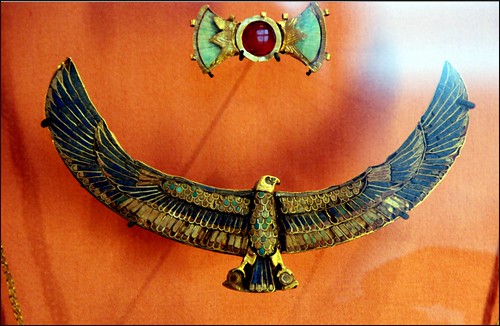
(Chaemwese), son of Pharaoh Ramses II.
Discovered in 1851-1853 by Mariette in he Serapeum.
1280-1215 B.C.
Reign of Ramses II.
Musée du Louvre, Paris.
Comentarios
Yinon.P. says:
Hi, I'm an admin for a group called Ancient Egyptian Jewellery, and we'd love to have this added to the group!
Publicado hace 4 semanas. ( enlace permanente )
2008_1217_134629AA--Musée du Louvre, Paris.
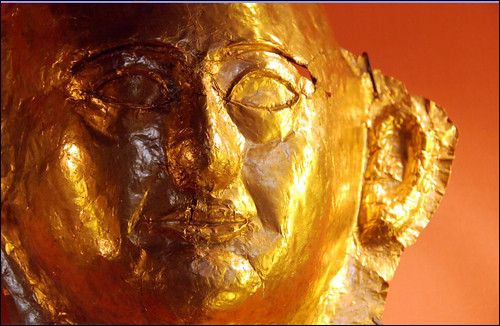
(Chaemwese), son of Pharaoh Ramses II.
Discovered in 1851-1853 by Mariette in he Serapeum.
1280-1215 B.C.
Reign of Ramses II.
Musée du Louvre, Paris.
Comentarios
PercyGermany™  says:
says:
Hi, I'm an admin for a group called Ägyptengruppe, and we'd love to have this added to the group!
Publicado hace 14 meses. ( enlace permanente )
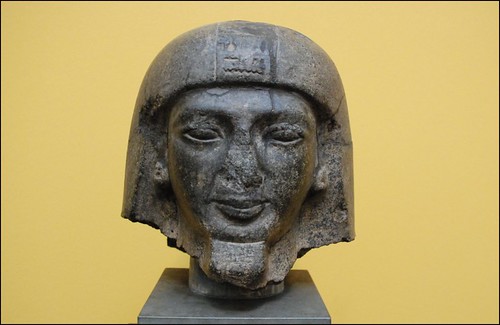
Findspot unknown.
Diorite.
Reign of Ramses II.
Carlsberg Glyptotek, Copenhagen.
2007_1221_131314AB
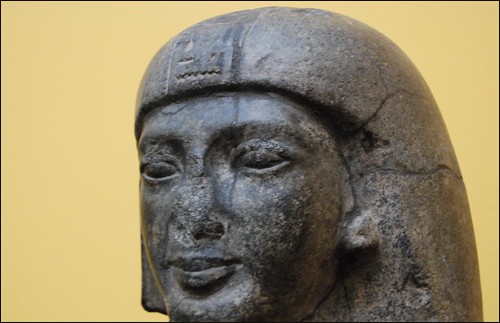
Findspot unknown.
Diorite.
Reign of Ramses II.
Carlsberg Glyptotek, Copenhagen.
2008_0919_172721AA The Toledo Museum of Art
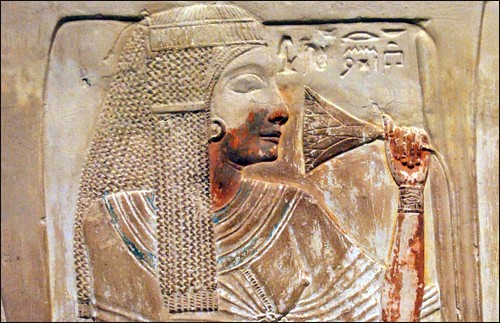
Limestone with paint, about 1250 B.C.
Egyptian, Dynasty 19 (1295-1186 B.C.)
From the Tomb Chapel of Amunhotep at Deir Derunka, the necropolis of Asyut.
Amunhotep, the Kings scribe and chief physician, is shown seated on a costly lion-footed chair. His wife, the lady of the house, Rennut, kneels beside him.
They wear robes of sheer, fnely pleated linen and elaborate wigs that were fashionable at the time of king Ramses II (ruled 1279-1213 B.C.) Rennut inhales the scent of of blue lotus, symbol of the daily rebirth of the sun.
Amunhotep accepts offerings of bread (stacked vertically on the table) and prayers from a preast, wearing his ritual cheetah skin and braided lock of hair.
Toledo Museum of Art, Toledo, Ohio, USA.
2008_0919_172716AA The Toledo Museum of Art

Limestone with paint, about 1250 B.C.
Egyptian, Dynasty 19 (1295-1186 B.C.)
From the Tomb Chapel of Amunhotep at Deir Derunka, the necropolis of Asyut.
Amunhotep, the Kings scribe and chief physician, is shown seated on a costly lion-footed chair. His wife, the lady of the house, Rennut, kneels beside him.
They wear robes of sheer, fnely pleated linen and elaborate wigs that were fashionable at the time of king Ramses II (ruled 1279-1213 B.C.) Rennut inhales the scent of of blue lotus, symbol of the daily rebirth of the sun.
Amunhotep accepts offerings of bread (stacked vertically on the table) and prayers from a preast, wearing his ritual cheetah skin and braided lock of hair.
Toledo Museum of Art, Toledo, Ohio, USA.


![N5 [ra] ra](http://es.wikipedia.org/w/extensions/wikihiero/img/hiero_N5.png)

![D28 [kA] kA](http://es.wikipedia.org/w/extensions/wikihiero/img/hiero_D28.png)


![M17 [i] i](http://es.wikipedia.org/w/extensions/wikihiero/img/hiero_M17.png)
![D58 [b] b](http://es.wikipedia.org/w/extensions/wikihiero/img/hiero_D58.png)


PercyGermany™ says:
says:
Hi, I'm an admin for a group called Ägyptengruppe, and we'd love to have this added to the group!

Publicado hace 14 meses. ( enlace permanente )